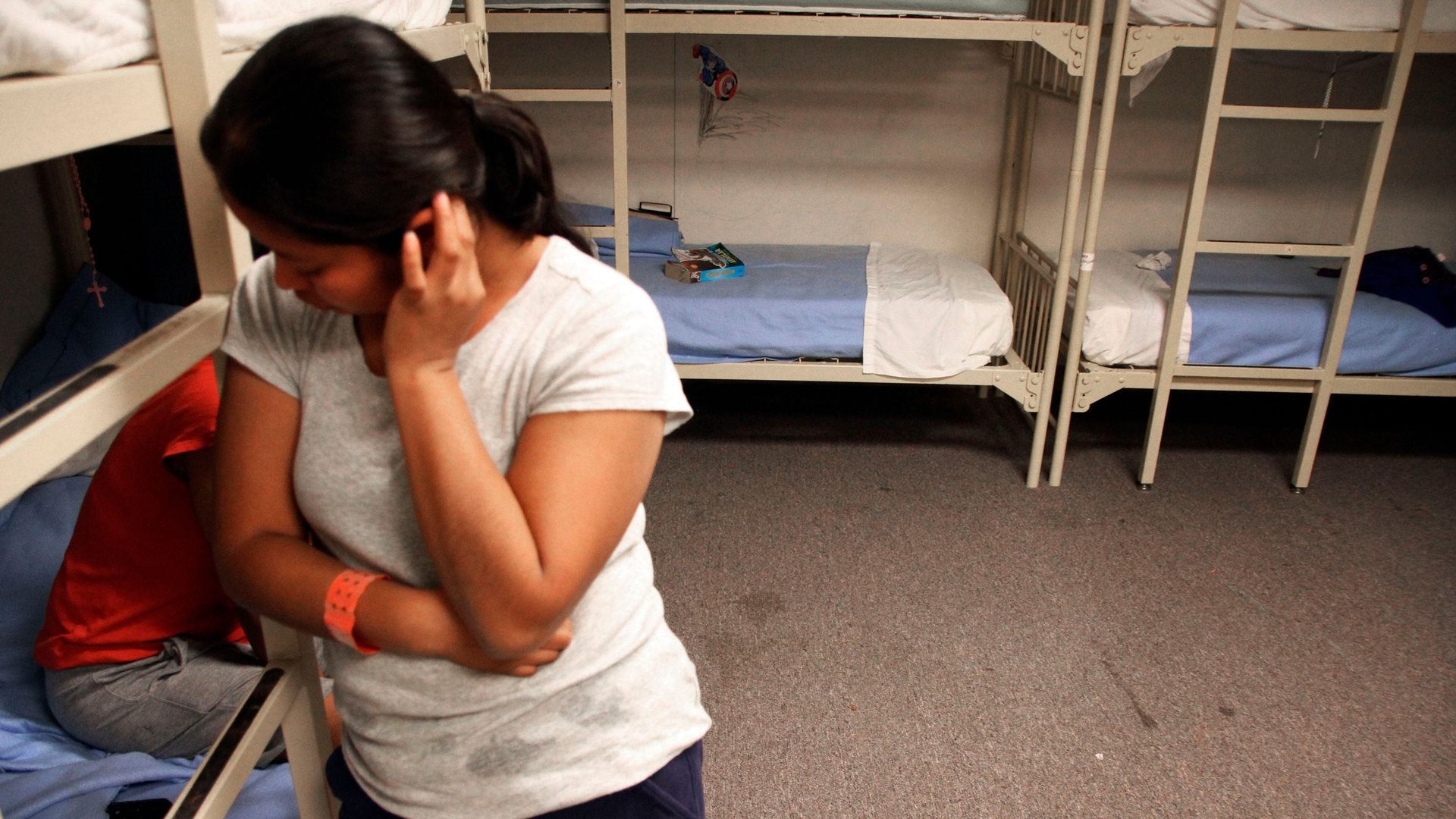These child abuses shut down Obama’s family detention policy. Trump is resurrecting it.
Donald Trump vowed to break away from his predecessor’s immigration policy. Now he finds himself in the exact same tough spot as Barack Obama a few years ago: with no good place to put the thousands of Central American immigrants he’s apprehended.


Donald Trump vowed to break away from his predecessor’s immigration policy. Now he finds himself in the exact same tough spot as Barack Obama a few years ago: with no good place to put the thousands of Central American immigrants he’s apprehended.
Trump’s idea of detaining immigrants with their children is a rehash of Obama’s approach in 2014. Back then, US immigration authorities were struggling to handle a surge of Central American asylum-seekers crossing the border illegally.
To deter others from coming, the Obama administration started holding mothers and children in huge detention facilities. The result: widespread instances of mistreatment, to the extent that a federal court ordered that the practice be stopped.
The situation this time around is somewhat different. The Trump administration is running out of space, in part, because it chose to prosecute every single immigrant caught between ports of entry. (The number of immigrant apprehensions so far this year remains below 2014 levels.) But immigrant advocates say that locking them up is likely to result in the same kind of abuse as last time.
Detention ≠ child wellbeing
Family detention is incompatible with child welfare, immigrant advocates say. “The idea of having a place where children are in prison… that could never be made in such a way that would be appropriate,” said Cristina Parker, a spokeswoman for Grassroots Leadership, a group that fought against the Obama administration’s family detention policy.
Here’s a description of the situation at a facility run by GEO Group in Karnes, Texas, from a 2014 report filed by the University of Texas immigration and civil rights clinics to the Inter-American Commission on Human Rights in 2014.
“Guards give disciplinary write-ups to women and children alike, and multiple women have reported that children are written up for doing ‘children things,’ like running or laughing loudly or playing too much. In addition, guards sometimes threaten separating a mother and her child if the child is sanctioned for ‘bad’ behavior.
Women and children at Karnes are also required to participate in several daily body counts. During these times, all residents are required to remain in their designated indoor locations. If children cannot remain still during this time, they may be written up for a disciplinary infraction.
Children are also not allowed to bring toys into their rooms. Reportedly, infants and toddlers may not be placed on the ground to engage in developmentally-appropriate activities such as crawling.”
The centers were also ill-equipped to treat children in other ways. At another detention center, this one in Dilley, Texas, 250 kids were given adult doses of Hepatitis A vaccines in 2015. At the time, ICE said there were no adverse reactions, but immigrant advocates reported fevers and rashes.
Isolation was used as a form of punishment for women, with and without their children, according to reports.
The companies that run the detention facilities for the Department of Homeland Security (DHS) have insisted that they provide high-quality care and treat detainees with dignity.
Lowering the standards for child detention
Obama ran afoul of the law because he put families in facilities that didn’t have a license to house children, as is mandated by a 1997 court settlement known as the Flores agreement. It wasn’t for lack of trying.
The temporary license that the Obama administration got for one Texas shelter from the state’s Department of Child Protection Services was halted in 2016 by a state judge, who found that conditions at the detention facility were dangerous for children.
Its operator, GEO Group, made a second attempt at licensing in 2017 by getting a state representative to introduce a bill that lowered the standards so it could meet them. The bill failed.
Trump, too, is trying to circumvent the detention centers’ lack of licenses: his attorney general, Jeff Sessions, asked the federal judge that stopped family detention under Obama for dispensation from the Flores agreement.
“It feels like déjà vu,” said Michelle Brané, migrant rights director at the Women’s Refugee Commission, a non-profit advocacy group. “It is frustrating.”
Rollbacked policy
The Obama administration backtracked on its family detention policy just a year after rolling it out. “We have concluded that we must make substantial changes to our detention practices when it comes to families,” said then Homeland Security secretary Jeh Johnson in June 2015, when he launched an advisory committee on family detention.
The committee recommended that DHS work under the assumption “that detention is generally neither appropriate nor necessary for families—and that detention or the separation of families for purposes of immigration enforcement or management, or detention is never in the best interest of children.” By the summer of 2016, the average detention time for a family at Karnes and Dilley was a week, according to a report by DHS’s Office of Inspector General. In surprise visits to the facilities, which were operating well below capacity at the time, agency inspectors found that they met required standards.
Johnson has been more candid recently, now that the outcry is not over his own policies. He knew family detention was controversial at the time he implemented it, but it was necessary, he told Fox News Chris Wallace in an interview earlier this month. He also admitted that its deterrence effect was short-lived; after a while, the number of immigrants caught at the border went up again.
“Unless we deal with the underlying causes that are motivating people to come here in the first place, we are going to continue to bang our heads against the wall on this issue,” he said.